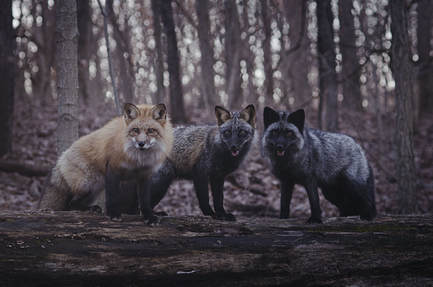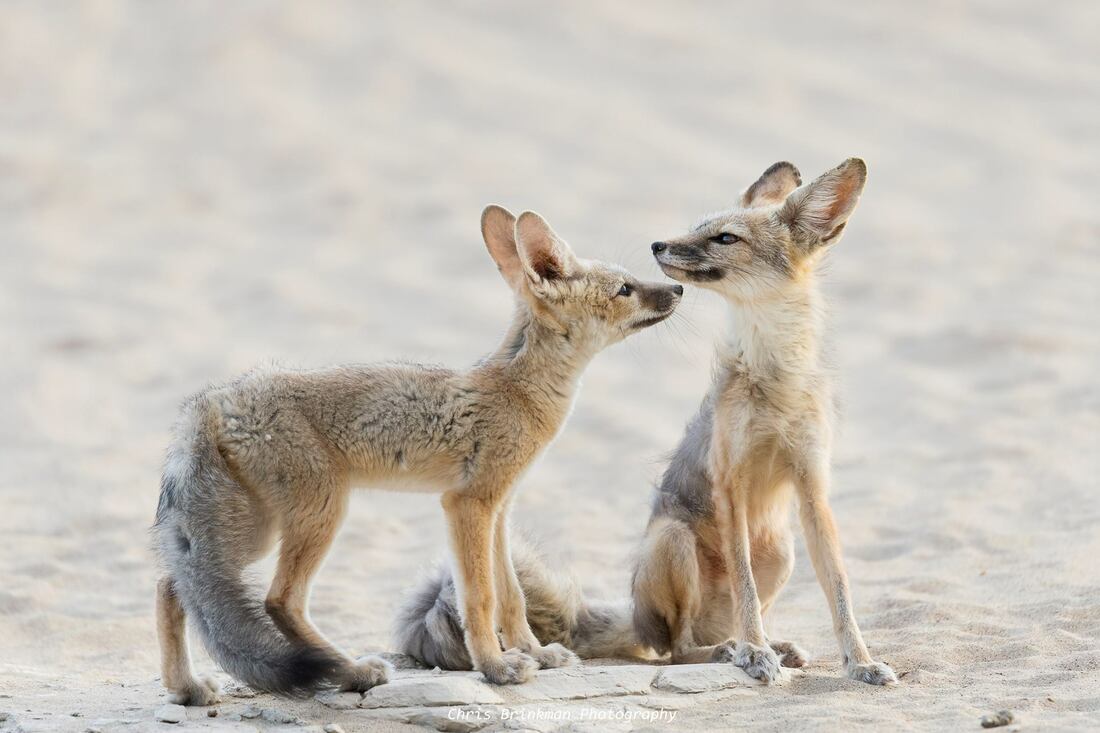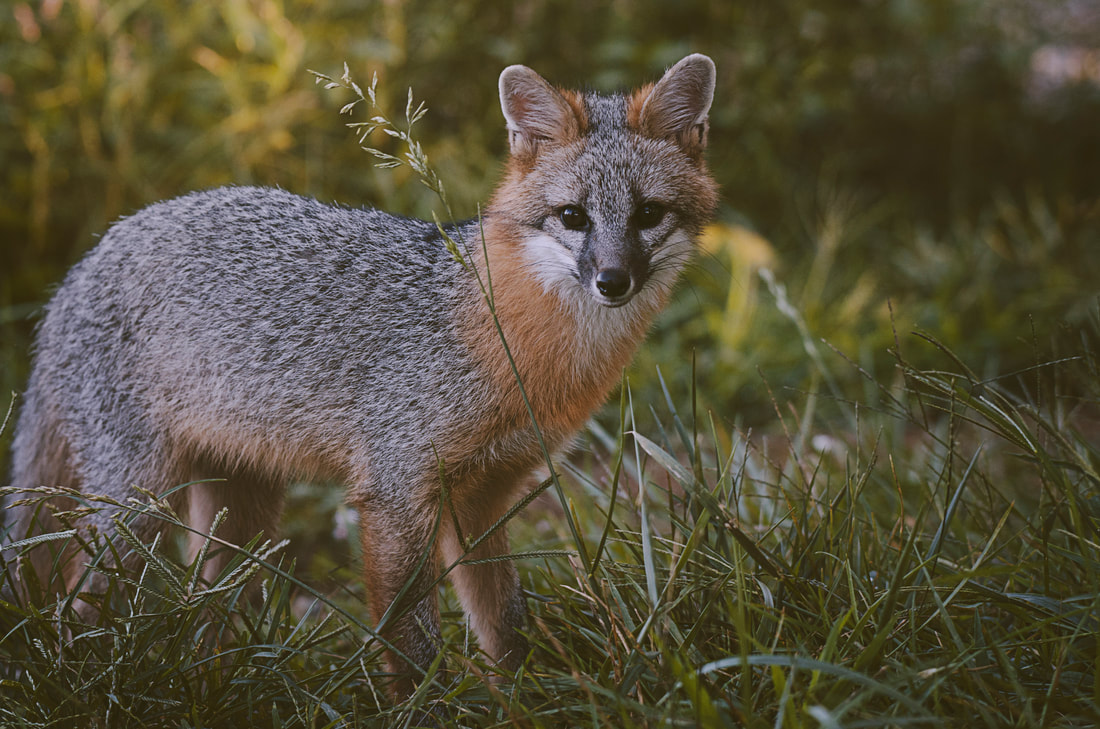The biological family Canidae is a lineage of carnivores that includes domestic dogs, wolves, foxes, jackals, coyotes, dingoes, and many other dog-like mammals. A member of this family is called a canid (or canine). Our domestic dogs (Canis lupus familiaris) are a subspecies of gray wolf, domesticated by humans thousands of years ago. Dogs still remain one of the most popular animals kept as pets.
At Ironwood, our focus is educating about wolves, but we are fascinated by all types of canids; so here is a list of other species found here in North America:
At Ironwood, our focus is educating about wolves, but we are fascinated by all types of canids; so here is a list of other species found here in North America:
|
Coyote (Canis latrans)*
Coyotes are found virtually in every area in North America: be it rural or urban landscape. They are extremely adaptable and unlike wolves, all efforts of eradication of this species have failed. It is also thought that since wolves have been eliminated in most areas, that coyote numbers easily skyrocketed as they had no competition. They can be between 15-45lbs and live about 6-8 years in the wild.
As an opportunistic animal, coyotes will eat just about anything. They will feed on carrion and hunt rabbits, fish, frogs, and even small deer. Since Coyotes are known to kill small pets, they are considered a varmint or pest in most areas. Coyotes generally will hunt alone, but they have also been recorded working together to take down prey. A pack of coyotes are a strong family group and can vary in numbers, however they may also just live in pairs. Coyote pups are born each spring and litter sizes vary between 4-8 pups. Both parents work together to help care for their young. There is a noticeable difference between coyotes living in the east and western United States. Eastern coyotes (also known as a 'coywolf') tend to be larger, as studies have shown that many of them have wolf (and/or domestic dog) somewhere in their lineage. |
|
Wild red foxes can be red phase, cross phase (red and black in the coat- a form of melanism), or black phase (also known as silver or melanistic).
|
Red Fox (Vuples vulpes)*
Of all canid species, the red fox has the widest geographical range. They are found throughout the northern hemisphere from the Arctic Circle to North Africa, North America, and Eurasia. Like the coyote, red foxes are extremely adaptable and can live in urban areas alongside humans with no problem. They can also thrive in diverse rural habitats such as desert, tundra, mountains, and forests. Red foxes can be 4.5-31lbs and have a lifespan of 3-5 years in the wild.
Their diets can consist of small rodents, carrion, eggs, and different types of fruit and vegetables. As a scavenger and opportunistic animal, red foxes are often the culprit of chicken coop raids and tend to be seen as a pest to farmers. They were heavily hunted for their fur, and the amount of captive bred foxes in fur farms far exceeds the number of any other species except for Minks. Foxes live in pairs and when adults find a mate they breed with them for life. Breeding season is in late winter, and kits are born in spring with up to 12 in a litter. Captive red foxes have been selectively bred to come in a range of over 40 different coat colors such as blue, liver, spotted, and more. We learned a lot about color genetics and domestication with the Russian fox experiment in the early 1900s. It was an interesting way to watch animal domestication in just a few generations. You can learn more about the Siberian fox program in Russia here. |
|
Arctic foxes have a plush white coat in winter months. In spring, they shed their outer white coat to reveal a dark undercoat; this helps with camouflage throughout the seasons.
|
Arctic Fox (Vulpes lagopus)
The arctic fox is found throughout the entire Arctic tundra, through Alaska, Canada, Greenland, Russia, Norway, Scandinavia, and even Iceland, where it is the only native land mammal. They are built to survive extreme cold with their thick coats, small ears, muzzle, and compact bodies that helps them conserve heat. They can range in size from 6.5 to 21lbs and tend to live about 3-6 years in the wild.
The arctic fox mainly eats lemmings, which are a small rodent. If the number of lemmings is plentiful, there are more Arctic Foxes in an area. However, Arctics are very opportunistic and often feed on bird eggs, or leftovers from other large predators. They have an incredible sense of hearing, and can even pounce through ice to catch their meals. Arctic foxes find a mate to breed with for life, and the pair work together to care for their kits. Breeding season is between September to early May, with 5-9 kits typically born in a litter. Because of climate changes, the arctic fox has been pushed further north out of its habitat by the red fox. Although they are not considered a threatened species, this may eventually change if loss of habitat continues. You can read more about the competition between the red and arctic fox observed in Russia here. |
|
Swift Fox (Vulpes velox)
The swift fox can be found in portions of Montana, South Dakota, Wyoming, Nebraska, Colorado, Kansas, Oklahoma, New Mexico and Texas. Historically, their range included prairies in central North America, extending north to central Alberta, Canada, and south to central Texas, east-west from western Iowa to Colorado, Wyoming, and Montana. They are the size of a typical housecat, weighing between 5-7lbs and living about 3-4 years in the wild.
Swift foxes mainly prey on prairie dogs, ground squirrels, mice, birds, amphibians, berries, and seeds. They have been known to run at speeds of more than 30 miles per hour, which is how they got their name. Unlike most canids, they spend most of their time underground in their burrows. Swift foxes are very social animals and non-territorial. When they find a mate, they breed with them for life. Mating season is December-February, and there is usually 4-5 kits per litter. At this time, swift foxes are found in less than 40% of their historical range. This is due to habitat loss, as they are found in prairies which are being destroyed and turned into agricultural land. Many Native American tribes are working to restore the swift fox to its natural habitat with few financial resources. So far, they have been extremely successful. |
|
Kit Fox (Vulpes macrotis)
Kit foxes inhabit deserts and arid lands of southwestern United States and northern and central Mexico. Despite looking small and fragile, kit foxes are extremely hardy animals. They are well adapted for the desert with their large ears to radiate heat, furred paw pads to protect their feet on the hot sand, and their coloration serves as perfect camouflage. Kit foxes are the smallest fox in North America, weighing between 3.5-6lbs. Their average lifespan is about 5 years in the wild.
Mostly a nocturnal animal, kit foxes will go out after sunset to hunt. They mainly eat small animals such as kangaroo rats, rabbits, voles, prairie dogs, insects, reptiles, birds, and carrion. If food is scarce, kit foxes have been known to eat different types of fruits. Many kit fox families can occupy the same hunting grounds, but will give one another space by not hunting around the same time. Kit foxes will choose a mate for a breeding season (December-February), and sometimes find a new one the following year. Polygamous matings have also been observed with this species. Litters are born in early spring and can be anywhere from 1-7 kits. There are two recognized subspecies of the kit fox: the San Joaquin kit fox (Vulpes macrotis mutica) and the desert kit fox (Vulpes macrotis arsipus). The San Joaquin kit fox is the largest of all kit foxes, but it is also endangered. On September 26, 2007, Wildlands Inc. announced the designation of the 684-acre Deadman Creek Conservation Bank, which is intended specifically to protect habitat of the San Joaquin kit fox, although their numbers are still declining due to habitat loss and competition with red foxes. |
|
Gray Fox (Urocyon cinereoargenteus)*
The gray fox can be found in the southern half of North America. It is the only canid whose natural range spans both North and South America. Before human advancement and deforestation, they were more commonly found than red foxes in the eastern United States. Gray foxes can range in weight from 7-15lbs, although they can get up to 20lbs. Their average lifespan in the wild is about 6-8 years.
Gray foxes are solitary hunters, with their main prey being rabbits, voles, and birds. They also will seek out fruits and vegetables, eating more plant based meals than even red foxes. In some areas of the United States, gray foxes will primarily eat insects and plants. Gray foxes will choose a mate and stay with them for life, and breeding season can vary depending on where they live. When they have their young, the family will stay together until kits reach adulthood. Litter size can range anywhere from 1-7. Aside from the raccoon dog, gray foxes are the only canid species that will climb trees, and will often make a den in a hollowed out tree up to 30ft from the ground. They are rather elusive and do not adapt to urbanization as well as red foxes, who are more frequently seen in neighborhoods. |
*= indicates species native to Ohio






